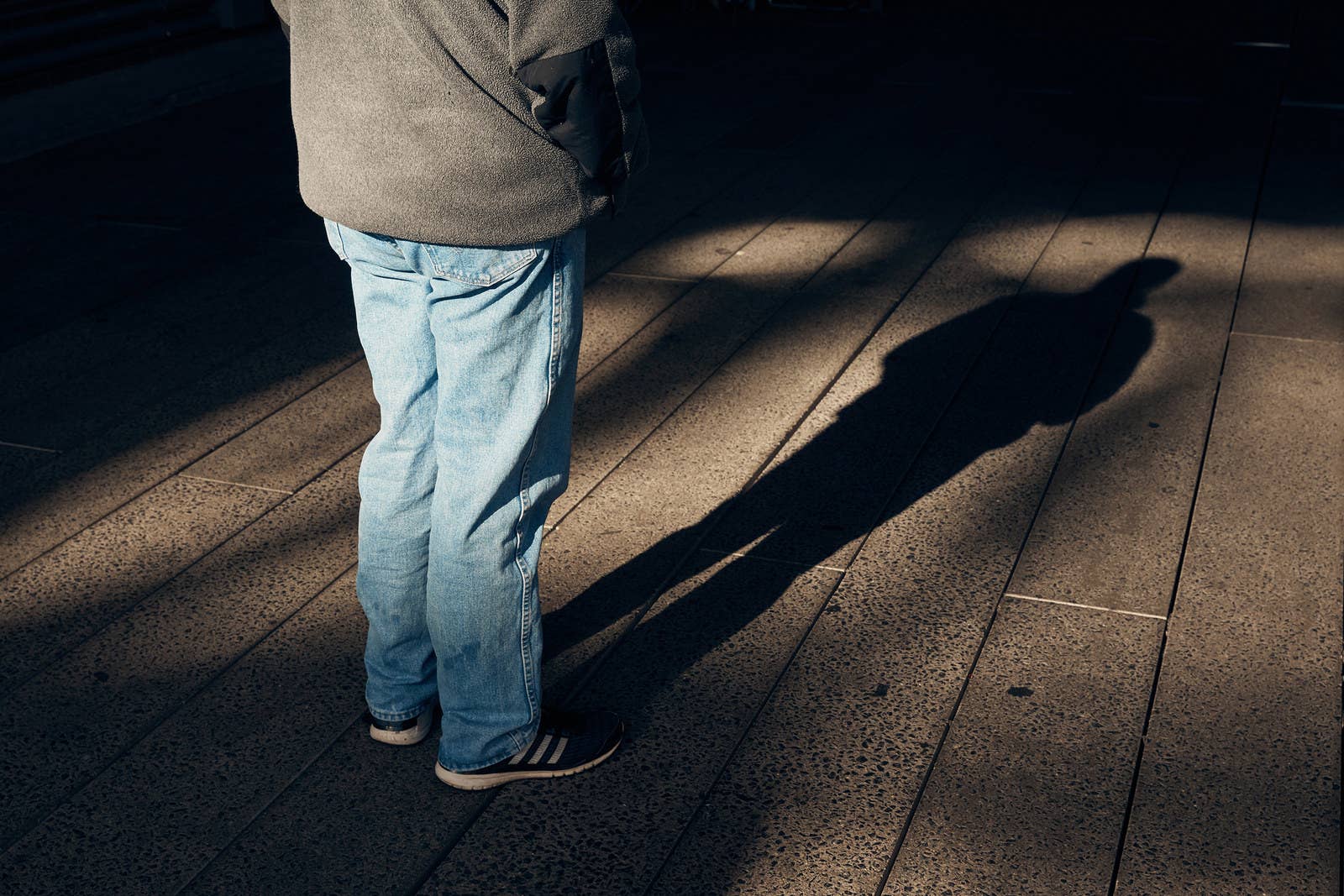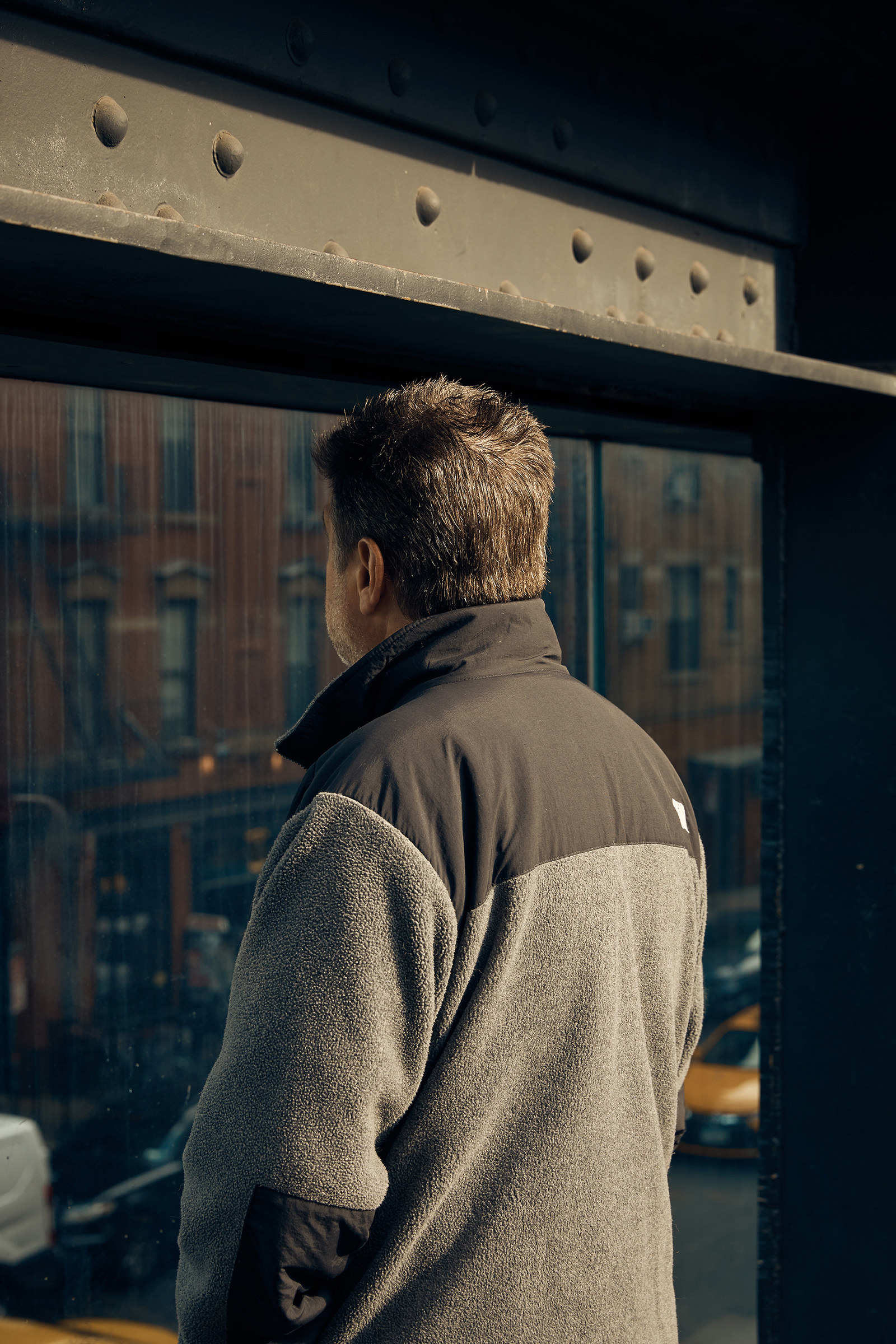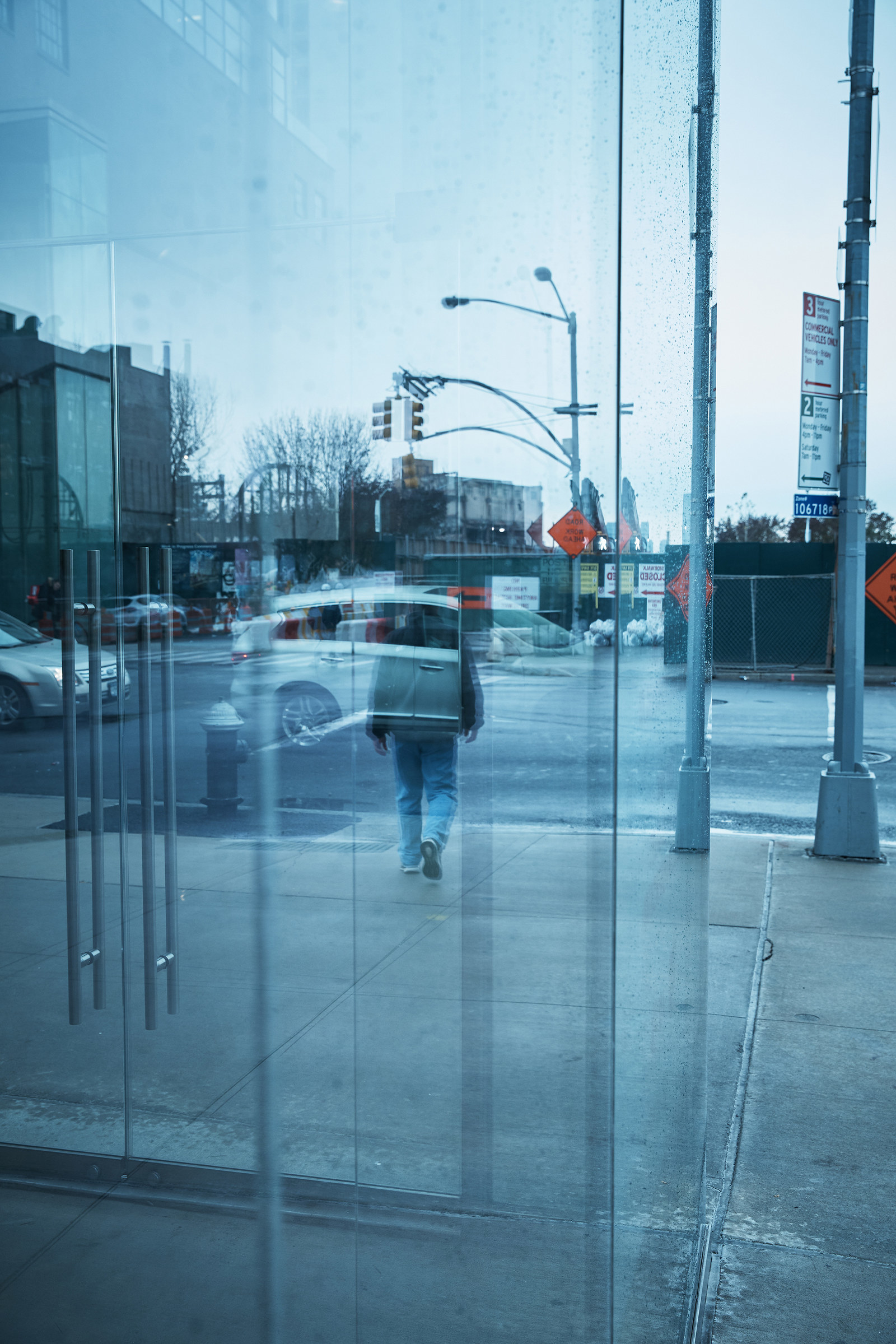After the six-hour drive to the Lake Erie beach, Paul stood in the water and began walking into the waves.
The 53-year-old had been in intense pain for seven years, ever since a failed hernia surgery. That morning it had been so bad he couldn’t put on his underwear, only shorts and a shirt.
A passerby on the beach asked him if he was okay. And he remembered he hadn't said goodbye to his wife.
So he went home to tell her that he didn't want to live anymore.
Paul is one of some 2 to 6 million chronic pain patients in the United States who are prescribed extremely high doses of opioid painkillers like Vicodin, Percocet, and OxyContin. In the midst of a growing opioid epidemic, medical authorities say that’s far too many.
Last year, the CDC issued sweeping new guidelines encouraging doctors to stop using opioids for chronic pain. Now the FDA is weighing a petition asking the agency to outlaw “ultra–high” dose pills such as OxyContin 80 milligrams. The experts behind these changes argue that the benefits of these medications for chronic pain are unclear, and the risks of overdose very real: These painkillers, whether bought legally or on the black market, caused more than 14,000 fatal overdoses last year.
But people like Paul, and a vocal minority of doctors, reject the idea that prescription opioids are driving the wider crisis, and say the new policies are doing more harm than good. “Those CDC guidelines ignited a wildfire,” geriatric medicine specialist Thomas Kline of Raleigh, North Carolina, told BuzzFeed News.
Kline says it’s not chronic pain patients who are dying of pill overdoses, but rather “a group of heroin addicts” who take the pills illicitly to get high. Specialists in this camp argue that, although high-dose painkillers are linked to overdoses, no studies have yet shown that tapering medications reduces that risk. They also suggest that the lack of evidence for the pills’ effectiveness just means that no one has done a study to show something obvious — that painkillers dull pain.
The guidelines have had swift impact: Some doctors are abruptly ending prescriptions even when patients have been stable on high doses for years, throwing them into withdrawal — a soul-rending mix of nausea, agony, depression, and sometimes worse. Kline maintains a list of chronic pain patient suicides — now up to 23 names — that he attributes to having prescriptions cut off.
As opioid overdoses have officially become a public health emergency, the chronic pain debate has turned nasty, complete with insults and insinuations. Kline calls one well-known proponent of the new guidelines, Andrew Kolodny of Brandeis University, “kind of a comic book demon.” In October, a group of pain patients and doctors tried to have Kolodny fired, inaccurately claiming he wanted to force unwilling patients off opioid prescriptions. Some patients post inaccurate allegations that he has lost a child to an overdose or is profiting off rehabilitation centers.
Kolodny, meanwhile, told BuzzFeed News that he actually agrees that stable patients who are physically dependent on opioids shouldn’t have their medication stopped abruptly. But he says it’s “not a coincidence” that pharmaceutical companies support the patient organizations in an uproar over the CDC’s guidelines.
Underneath the animus, almost everyone agrees, is not so much a clash between the doctors and patients. It’s a medical system, built on 15-minute doctor visits that end with a prescription, that doesn’t effectively treat pain.

Although he had lived with a bad back for decades, Paul’s experience with high-dose opioids began in 2010, when he got a hernia after moving a desk. His body rejected the plastic mesh implanted for the hernia, which led to more surgeries, which led to more back pain. He put a lot of extra weight on his 6-foot frame, reaching a high of 221 pounds and adding even more stress on his back.
All of that led to high-dose prescriptions for Tramadol — an opioid strong enough that the FDA bars its use in children — plus up to 30 oxycodone pills a month, if he needed them. He also took Valium, an anti-anxiety drug that increases the risk of an opioid overdose.
The country was only just waking up to the opioid problem. High doses of these drugs had been reserved for cancer and hospice patients until the mid-1990s, when doctors began prescribing them for chronic pain. By 2010, high doses were standard care, at more than 10% of all opioid prescriptions for chronic pain, and the pendulum started to swing the other way.
Whether delivered by pill, patch, or syringe, opioids can bring both pain relief and euphoria.
The Department of Veterans Affairs and the American Pain Society called for cutting the highest dose prescriptions in new guidelines, triggering a slow decline. Ohio and Kentucky, among the states with the highest overdose rates, started monitoring prescriptions to prevent patients from “doctor shopping” for providers who would give them pills. Florida and other states started cracking down on “pill mill” pain clinics that handed out painkillers like candy. And over the next few years, a slew of studies and press reports linked high-dose prescriptions with addiction and overdose.
Whether delivered by pill, patch, or syringe, opioids can bring both pain relief and euphoria. Over time, the high may fade, but opioids still trigger a chemical dependence, as the brain stops making its own natural opioids and comes to rely on the drug instead. Nearly half of people taking opioids for a month will still be taking them a year later.
Paul’s opioid prescriptions made his pain bearable, but did not eliminate it, leaving him distracted at work by the stabbing pain along his spine. He tried many alternative treatments, from “biofeedback” (which uses electrical sensors to monitor physical changes in the body) to cognitive behavioral therapy. Nothing worked.
In the fall of 2015, stable on 300 milligrams a day of Tramadol, as well as oxycodone and Valium, Paul’s longtime doctor went on permanent leave. His new doctors presented him with a “pain contract” to sign. Its 12 stipulations included promises to undergo urine testing, alternative treatments, and detoxification treatment, if ordered. They cut off his oxycodone and Valium, but increased his Tramadol to 400 milligrams, and started giving pain shots of steroids to his back.
Without the high-dose oxycodone, Paul could no longer tolerate the days when his back pain flared up, locking him down in agony.
The CDC guidelines released in March 2016 called for avoiding opioid painkillers for chronic pain patients. For those who are already dependent, the guidelines recommend limiting prescriptions to less than the equivalent of 90 milligrams of morphine a day. Paul’s old prescriptions of Tramadol and oxycodone were above this threshold, but his new prescriptions, even with the higher dose of Tramadol, were below it.
In some cases, people do manage to cut down on their opioid use, reduce their pain, and lead more functional lives, psychiatrist and pain medicine expert Mark Sullivan of the University of Washington told BuzzFeed News. A recent study of 35 patients who wanted to cut down their painkiller doses, for example, found their lives improved and their pain wasn’t any worse after they switched to moderate doses.
“My pain got better after I got off opiates,” Ken Start, 54, of Muskegon, Michigan, told BuzzFeed News. He has written a book, Prescription For Addiction, about his 15-year painkiller addiction.
Start’s dependence culminated with a pain pump, a machine that delivered doses of pain medicine straight into his spine, that he flew down to Florida every three months to have refilled. “I thought I needed it for the pain, but I also needed it for the high,” he said. “The pain was severe, but the addiction took over and ran everything in my life.”
But not everyone has such a strong dependence. Paul dealt with oxycodone withdrawal a few times over the years, and each was a few days of flu-like misery. (It had been far more difficult to wean himself off of Cymbalta, a non-opioid antidepressant sometimes used to treat back pain.)

In 2016, shortly after the CDC guidelines were released, Paul’s doctors sent a memo to all their patients saying they were “going to start to slowly lower the opioid doses we prescribe,” in accordance with the recommendations.
With more bad days, sometimes unable to walk, Paul downshifted from working at a hedge fund to a less stressful job as a consultant, and relied heavily on relaxation techniques he learned in therapy to manage his pain.
In April of this year, a mishandled injection to his back sent Paul to the emergency room. His doctors took that opportunity to cut his Tramadol prescription, with the goal of getting him off opioids completely. During this tapering, one of his doctors called him an “addict” in front of his wife.
Pain patients often contend that they're wrongfully lumped in with people addicted to heroin and fentanyl. “The assumption is that people in pain are drug seekers. It’s widespread,” fibromyalgia patient Audrey Liebl, 44, of Springfield, Massachusetts, told BuzzFeed News.
The definitions of a “stable” patient on opioids versus one who “misuses” painkillers vary wildly.
Liebl recalled a recent trip to the emergency room for a skin infection when a nurse began interrogating her about the dosage of the opioid patch she wears for pain. “Obviously nobody starts off on a high dose,” she said. “I’ve been in pain for 20 years.”
Some doctors, too, put opioid-dependent patients into different categories. The hallmark of addiction is out-of-control drug-seeking behavior, which affects roughly 8% to 12% of chronic pain patients, according to one review. But those are the patients doctors see most often, perhaps explaining why many believe the numbers are far higher.
Adding to the confusion, the definitions of a “stable” patient on opioids versus one who “misuses” painkillers vary wildly in studies, with the latter averaging around one-quarter of patients. Few people fully adhere to their prescribed treatment plan, with many taking a pill ahead of schedule when pain flares. Smoking a joint might constitute misuse, as might drinking a beer, or even taking fewer pills than prescribed.
The opioid epidemic appears to be splitting into two epidemics, one of young people taking illegal drugs, and one of older people who, by and large, don’t. “People have to learn to inject heroin from people they know and trust,” medical epidemiologist Jay Unick of the University of Maryland, Baltimore County, told BuzzFeed News in April. It might be that older people just don't want to do that as much."
“There is a group of people who are addicted, compulsively using, despite ongoing harm to themselves,” addiction specialist Stefan Kertesz of the University of Alabama, Birmingham, told BuzzFeed News. “But there are other patients who are stable on high doses and are very worried” about the crackdown on their prescriptions, he said. The opioid pendulum is swinging too far, he added, if those patients are suddenly forced into withdrawal by doctors scared of losing their license to prescribe.
Earlier this year, Kertesz said, a younger doctor asked for his advice on pain patients who constantly wheedle, threaten, or demand higher doses of opioids. Kertesz replied by email: “If I have a guy who is working, taking care of his wife, attending Bible study, then I look at the case in a very different way than someone who is volatile and dysfunctional.”
The US medical system is ill-suited to treat pain patients with the kind of individual attention they need. There’s too little training on pain, too little time to treat people, perverse incentives to keep prescribing painkillers, and too few resources devoted to alternatives by insurers, said David Tauben, a pain medicine expert at the University of Washington, Seattle. “The problem is enormous.”
For example, until recently, doctors measured pain by asking patients to grade it on a scale of 1 to 10. “For a decade or more, many entertained the delusional idea that complex forms of human suffering could be resolved by reducing pain to a single number,” Kertesz said.
More than a dozen states and 100 counties have sued drug companies for deceptive marketing of painkillers to pain patients.
Handing out pills was a substitute for the real medical care — dedicated pain centers staffed with teams of psychologists, doctors, and social workers — that insurers, politicians, and taxpayers have been reluctant to pay for. And pharmaceutical firms have relentlessly flogged painkillers for the last two decades, despite a $600 million judgment against Purdue Pharma for its marketing of OxyContin in 2007. Just this year alone, more than a dozen states and 100 counties have sued drug companies for deceptive marketing of painkillers to pain patients, downplaying the risks.
No X-ray, no stethoscope, only the patient can measure pain. Modern medicine, driven by blood tests and insurance rates, falters at this impasse, while chronic pain is extremely common, affecting as many as 1 in 3 US adults.
The causes of chronic pain are wide ranging and often mysterious. In theory, it results from a lowered threshold for perceiving pain signals in the brain, following an injury or illness. The patients are in real pain. And they are frequently also dealing with depression, anxiety, or genetic conditions that might worsen pain.
People with chronic pain typically have complicated medical histories, said Sullivan of the University of Washington. On top of everything else, they’re often dealing with family or work problems, and the aftereffects of past trauma, he said.
They also often distrust doctors, buffeted by multiple diagnoses and treatments through years of pain. Where the patients might see themselves as only hanging on thanks to the painkillers, physicians can see people cut off from everyone else, sleepwalking through life, still in pain, and letting their other health problems slide.
“We don’t need more opioids. We need more realism about living with pain.”
“I say to people, it doesn’t seem like this medication is actually helping, maybe it is time to try something else,” pain medicine specialist Michael Hooten of the Mayo Clinic in Rochester, Minnesota, told BuzzFeed News.
“Let’s face it, these are psychologically tough patients to deal with for physicians,” he added. “You don’t get a lot of warm fuzzy feelings from people you are trying to get to do stuff they don’t want to do.”
Doctors and patients should stop expecting to eliminate all pain, said Hooten, the Mayo Clinic pain expert. Given how often both physical and mental health problems plague chronic pain patients, he said, pain facilities should treat every aspect of their lives.
“There’s a kind of false empathy when you are providing opioids instead of really treating people, offering them false hope,” Hooten said. “We don’t need more opioids. We need more realism about living with pain.”

Paul came home from the beach and tried to explain to his wife. “My life is nothing but pain anymore,” he recalled telling her. “Please let me go so we are all in a better place.” The next morning she took him to the crisis unit of an emergency room, where he was voluntarily committed to a mental health ward.
Most of the beds there were filled with chronic pain patients, he recalled, with those considering suicide receiving treatment for two to four days, while people who attempted suicide were treated longer. Paul was released in a week, diagnosed with depression due to chronic pain.
The possible link between stopping opioid treatment and suicide has become the bedrock disagreement in the fight over the CDC guidelines. Critics like Kline warn that patients forced off opioids will kill themselves in the face of withdrawal. But many of those same patients are also diagnosed with depression, a major risk factor for suicide that needs more than a painkiller to treat. Suicide rates have skyrocketed in the last two decades, particularly the rural parts of the country where opioids were prescribed in the highest doses.
In July, back at work, Paul’s doctors cut his remaining opioid prescription in half, to 150 milligrams, and took away the Valium entirely. They took him completely off opioids in September. Now he’s on a high dose of a non-opioid painkiller, Aleve, which comes with its own side effects.
“It's crazy from the standpoint that the fear of ‘addiction’ that I haven't shown signs of in 25 years suddenly outweighs the risk of heart attacks and ulcers,” Paul said in an email.
He has trouble sleeping most nights. He drinks (“the aftereffects are terrible”), “borrows” medication from friends and family, and has tried Kratom, an unapproved botanical drug that upsets his stomach and this month garnered a health warning from FDA commissioner Scott Gottlieb. At the end of his two-year tapering from opioids, Paul says his pain is the same as when he started seven years ago.
Paul’s big hope is that New Jersey will legalize medical marijuana. To deal with flare-ups, he has even considered buying pain pills on the black market, the very threat that inspired the drive to cut down on opioid prescriptions in the first place. That’s especially dangerous with fentanyl, a perilously potent opioid, now tainting the illegal drug market and increasingly turning up in counterfeit pain pills like the ones blamed for the 2016 death of Prince.
“I am not close to the black market yet,” Paul said, “but I feel that everyone is pushing me in that direction.” ●
